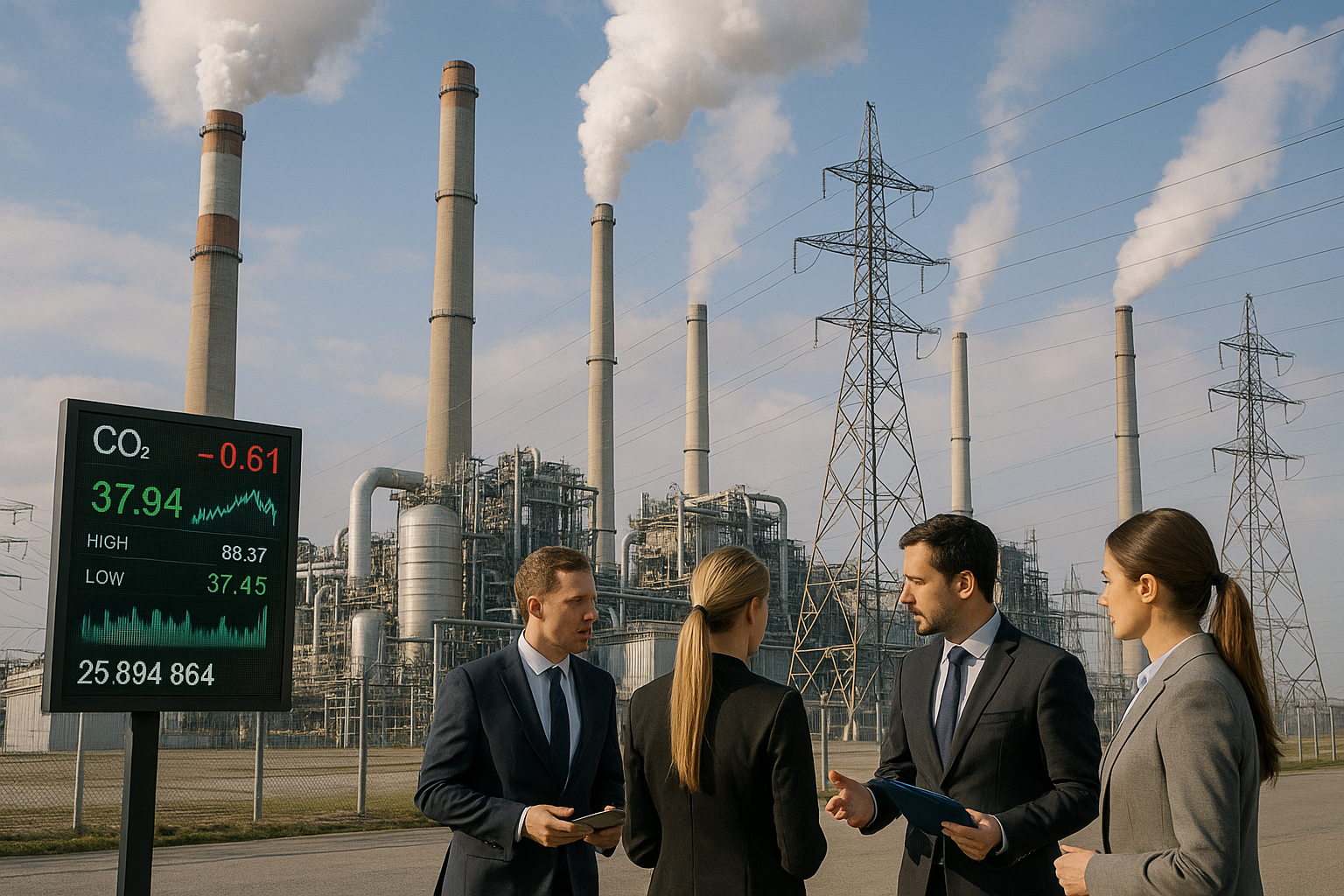Inside the EU ETS: The Economics and Evolution of Europe’s Carbon Allowance Market
The ECB study examines how industrial activity, energy prices, weather, and financial factors shape the demand and pricing of carbon allowances in the EU Emissions Trading System. It concludes that the ETS has evolved into a mature, credible market balancing environmental ambition with financial dynamics.

The European Central Bank working paper "The European carbon market and the demand for allowances: An empirical assessment (WP 3137)", authored by researchers from the European Central Bank, the European University Institute, and the Bank of Italy, offers a deep and data-driven portrait of how Europe's carbon market operates as both a climate policy instrument and a financial market. The study investigates how industrial output, energy prices, weather fluctuations, and policy interventions shape the demand for carbon emission allowances under the EU Emissions Trading System (EU ETS). Combining economic modeling with market analysis, the paper captures the evolution of Europe's flagship climate mechanism into a complex financial ecosystem that now sets the pace for global carbon pricing.
A Cornerstone of Europe's Climate Strategy
The EU ETS, launched in 2005, covers around 40 percent of the European Union's greenhouse gas emissions. It functions on a "cap-and-trade" principle, setting a total emissions ceiling while allowing firms to trade allowances freely. The authors trace the ETS's journey through four distinct phases, from an experimental framework with low prices and oversupply to a mature market where scarcity drives value. A defining moment came with the introduction of the Market Stability Reserve (MSR) in 2019, designed to automatically adjust the number of allowances in circulation. This mechanism curbed chronic oversupply and steadied prices, transforming the ETS from a policy experiment into a reliable tool for achieving climate targets.
What Drives the Demand for Allowances
Using monthly panel data, the researchers estimate how allowance demand responds to changes in industrial production, fuel prices, and weather conditions. Their analysis shows that industrial activity remains the strongest determinant: when output expands, emissions and allowance demand rise. Yet this link is influenced by the energy mix, when natural gas prices fall relative to coal, power producers switch to cleaner gas, reducing emissions and easing demand for allowances. The study also highlights the climatic dimension: cold winters push up heating needs and emissions, while windy or sunny seasons boost renewables, curbing fossil fuel use. The visualizations in the paper, especially those around page nine, reveal striking seasonal patterns, with demand peaking during cold spells and receding in renewable-rich months. These findings reinforce that Europe's carbon market is firmly grounded in the physical realities of weather and energy production.
From Policy Instrument to Financial Market
The empirical evidence demonstrates how the EU ETS has evolved beyond an environmental mechanism into a vibrant financial market. Carbon allowances are now traded by banks, investment funds, and other non-compliance actors who view them as valuable assets. This financialization has deepened liquidity and improved price discovery, but it has also made carbon prices sensitive to global financial conditions and investor sentiment. The paper notes that the surge in prices from below €10 per ton in 2018 to over €80 in 2022 was driven not only by stricter emission caps and policy credibility but also by speculative inflows anticipating future scarcity. Policy events, such as Brexit, the tightening of the EU's climate goals, and the post-Ukraine energy crisis, have all left distinct fingerprints on the carbon price trajectory. The authors caution that while financial participation can stabilize markets through liquidity, it can also amplify volatility when speculative motives dominate.
Balancing Ambition, Stability, and Oversight
In its closing analysis, the paper reflects on the EU ETS's dual identity: it is simultaneously a market for pollution rights and a speculative financial space. This hybrid nature demands coordinated oversight between climate policymakers and financial regulators. The authors propose expanding the ETS to new sectors like maritime transport and road fuel, enhancing the responsiveness of the Market Stability Reserve, and ensuring greater transparency in trading activity. They emphasize that while speculative capital can help price discovery, unchecked financialization risks turning carbon markets into arenas of short-term profit rather than long-term environmental progress.
The Road Ahead for a Maturing Market
The study concludes that the European carbon market has entered a new era of maturity, where prices increasingly reflect both the scarcity of allowances and the expectations of a greener future. Yet, its success brings new responsibilities. The credibility of the ETS will depend on maintaining a balance between price stability and climate ambition. The authors portray a market that now "speaks the language of climate policy", one where carbon prices are no longer symbolic, but a tangible signal of Europe's economic and environmental direction. As the continent advances toward its 2050 net-zero goal, the paper argues, the EU ETS must remain both a stabilizing force for industry and a relentless driver of decarbonization.
- FIRST PUBLISHED IN:
- Devdiscourse









